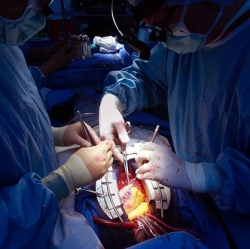
Right now, only four U.S. hospitals are using the Sedasys machine to sedate patients for surgery. Johnson & Johnson has been rolling it out after winning approval from the Food and Drug Administration in 2013. The FDA originally rejected the machine in 2010, but later approved it after Johnson & Johnson agreed it would only be used for simple screenings.
The machine administers a measured dose of propofol to the patient, and the drug acts quickly. To keep patients safe, the machine is programmed with conservative parameters. Even the slightest problem, for example, if the patient has low blood oxygen or a slow heart rate, slows or stops the drug’s infusion. According to the Washington Post, the machine has stricter limits than a human anesthesiologist would have.
For a colonoscopy, patients who choose to be sedated could pay as much as $2,000 to be put to sleep, which is more than the cost of the colonoscopy itself. Sedasys, on the other hand, costs between $150 and $200.
Anesthesiologists, who train for four years after medical school, are paid an average of $277,000 a year. Many argued that a machine couldn’t achieve the delicate balance between too much sedation, which can kill a patient, and too little, which doesn’t block out the pain.
Members of the American College of Anesthesiologists used to strongly oppose the machine, but as its approval became inevitable, they lobbied for restrictive guidelines instead. The co-chairs of the group’s Sedasys committee don’t see the machine taking over their profession though.
“Clearly this is an example of disruptive innovation,” Rebecca Twersky told the Washington Post. “But we’re not going away.”
